During our camper tour through Slovenia in September we have seen many beautiful and interesting spots. The weather was sunny and warm, which made our journey even more pleasant. We enjoyed the picturesque landscapes, the vibrant capital Ljubljana and we also visited some charming old towns.
Of course, I am sure that there is a lot more to see in this wonderful country, but in this post I will describe four highlights: Lake Bled, the Vintgar Gorge, the medieval town of Škofja Loka and the charming capital Ljubljana.
- Lake Bled with the Vintgar Gorge
Did you know that the stunning image of Lake Bled with a castle on the rocks and a small church on an island in the middle is one of the most famous pictures in Slovenia? Lake Bled was even nominated one of the seven new wonders of the world!
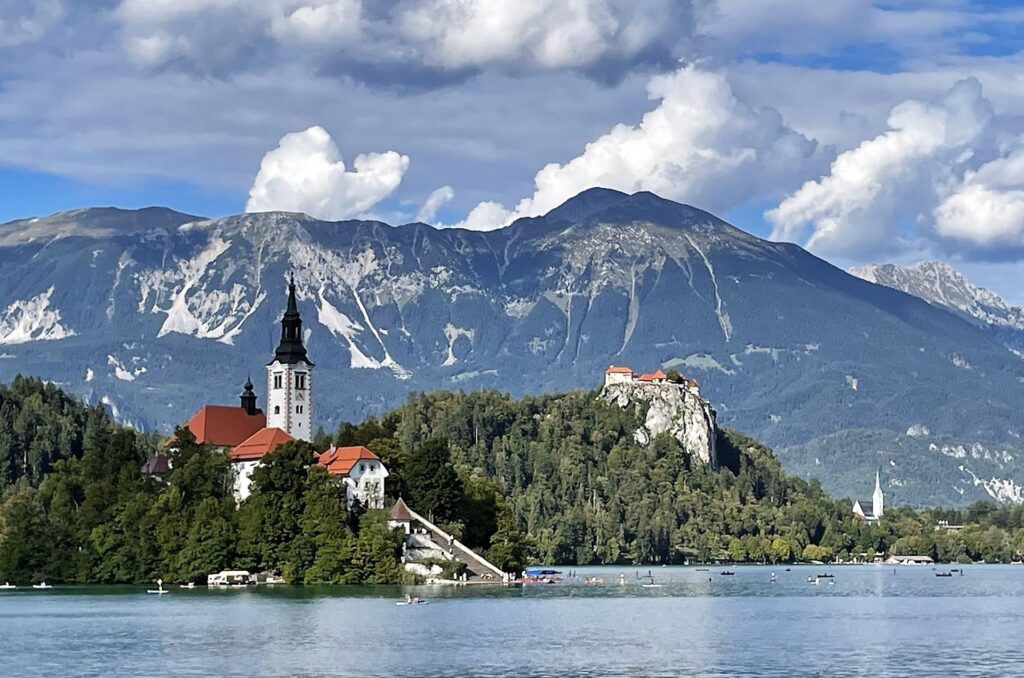
We spent a couple of days at Camping Bled and we never had a dull moment. Of course, we walked around the lake: the loop track is just 6 km long and is suitable for everybody, but it takes around 1.5-2 hours to walk all the way round. By the way, the best view over Bled island with the castle in the back is from the wooden paths over the water on the western bank.
What else can you do at Lake Bled?
First of all, visit the Baroque church of the Mother of God, built in the 17th century. You can take a traditional pletna boat to the island (€15,- p.p.) or rent a private boat; after arrival, you have to walk up 99 steps to the church. Once up, you can ring the so-called „wishing bell“ – the legend says that whoever rings to pay respect to the Virgin Mary, has his wishes come true.
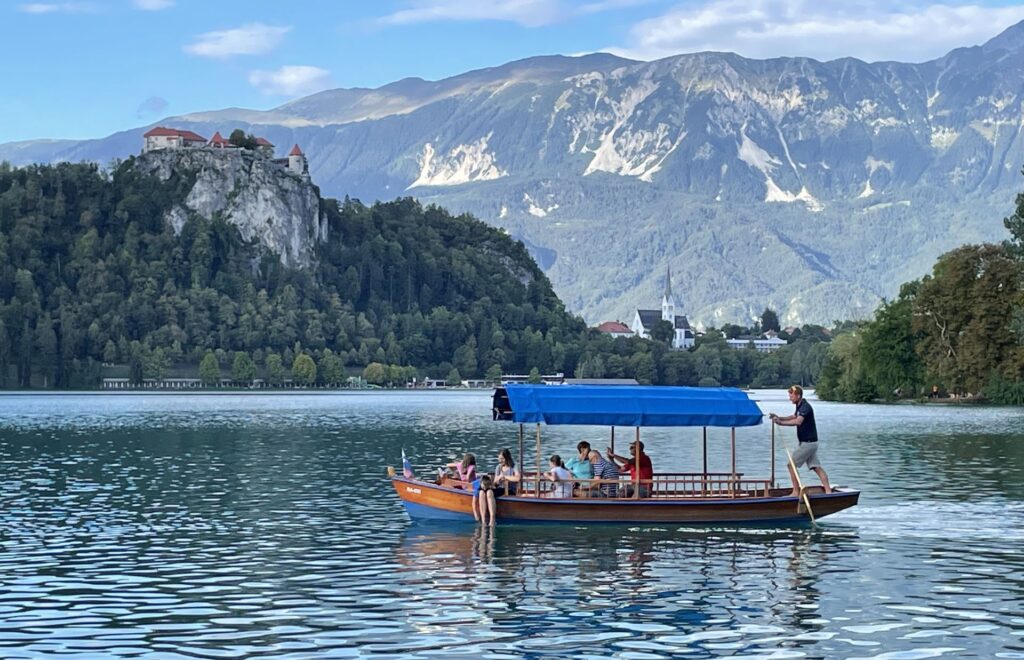
There is also a tradition that is still alive today, i.e. that the groom has to carry the bride up all 99 steps if the couple wants to get married in the church on the island.
Another possibility is going up to the castle that dates back to 1004, which makes it the oldest castle in Slovenia. It lies on a rocky cliff, about 135 m above the lake. The view from up there is breathtaking. It is a steep 20-minutes walk to get there (or 5 minutes by car).
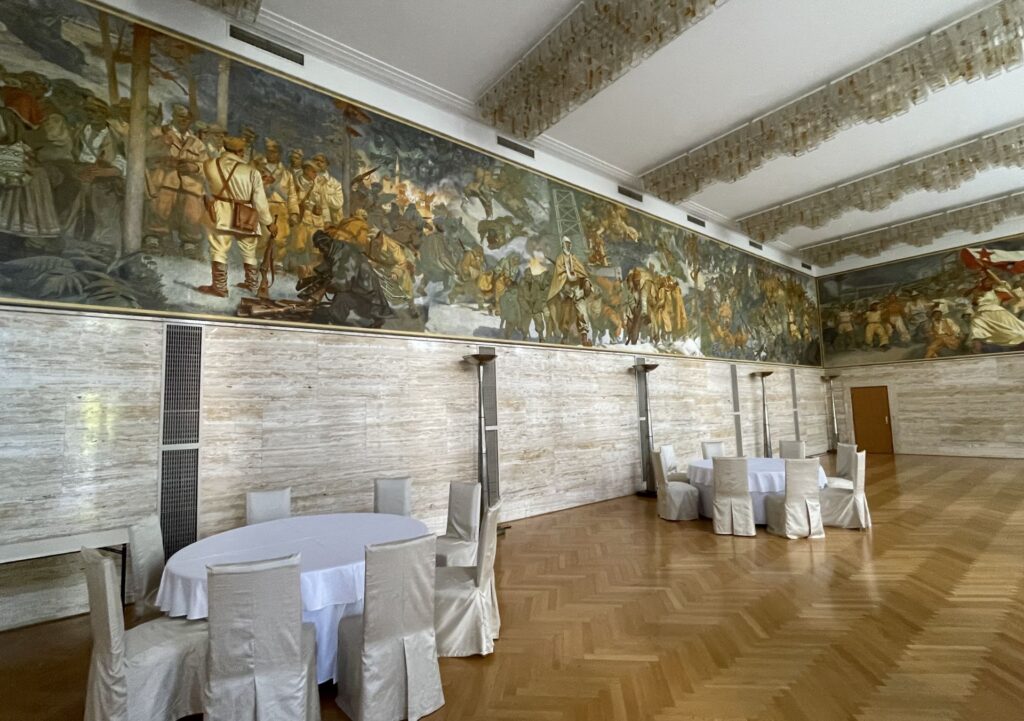
In my opinion, one of the most interesting sites of Bled is Villa Bled, which used to be the summer residence of Tito. It is a hotel now, but you can visit some rooms with a fancy decor from the fifties. In one of the rooms is a huge socialist-realistic painting on the wall, showing the Battle of Neretva, a famous battle during World War II. I found it very impressive!
And don’t forget to try the typical Bled Cream Cake or Kremsnita, which is made from puff pastry, cream and egg custard.
2. Vintgar Gorge
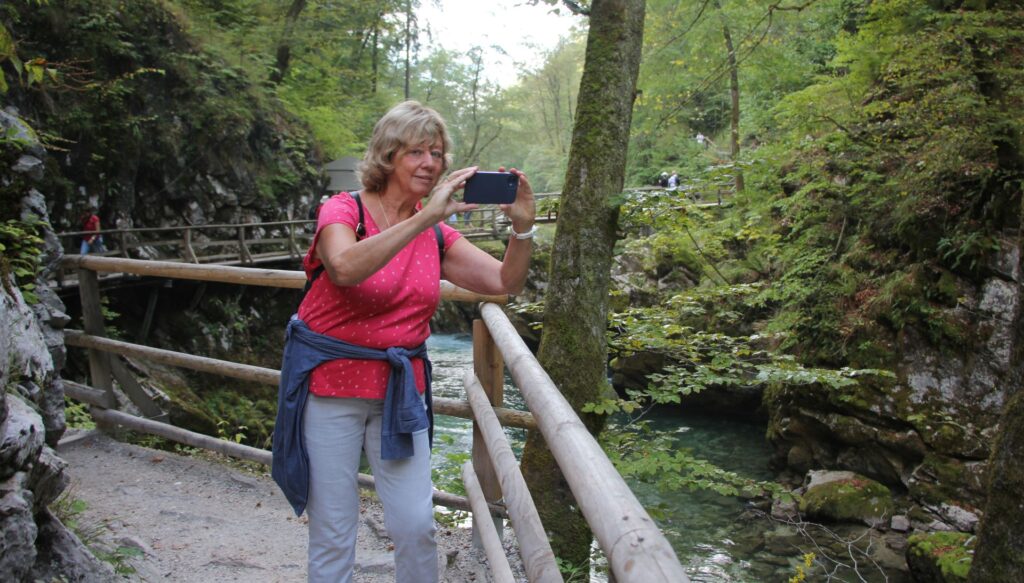
The Vintgar gorge is located around 4 km from Bled. This 1.6 km long canyon was carved by the Radovna River which made its path through the towering vertical walls of Hom and Boršt hills. Over 500 m of wooden bridges and galleries have been built to enable access to the gorge.
We visited the gorge in the early morning, as we knew that the narrow path can be overcrowded with tourists, even in September. It was a good choice, as it was rather quiet. By the way, since 2020, all foot traffic is one way only, which means that there is no return allowed via the gorge.
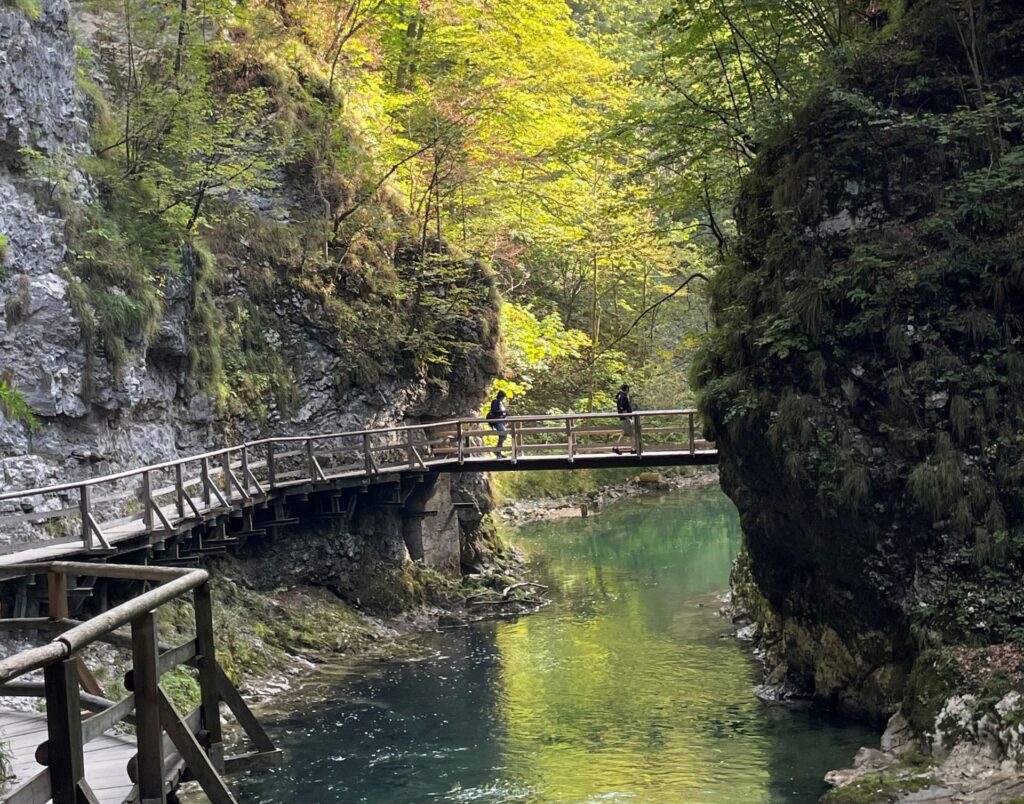
We walked the first part of the gorge on wooden galleries and we zigzagged our way over wooden bridges, which took us along and across the crystal clear river with its waterfalls, pools and rapids.
The scenery was stunning! Towards the end of the gorge we walked under a stone arch railway bridge, which is still in use today. The walk ends by the 16 m high Šum waterfall (in translation: humming waterfall), with a small hydroelectric power plant nearby. We walked down to the platform at the foot of the waterfall to see its beauty.
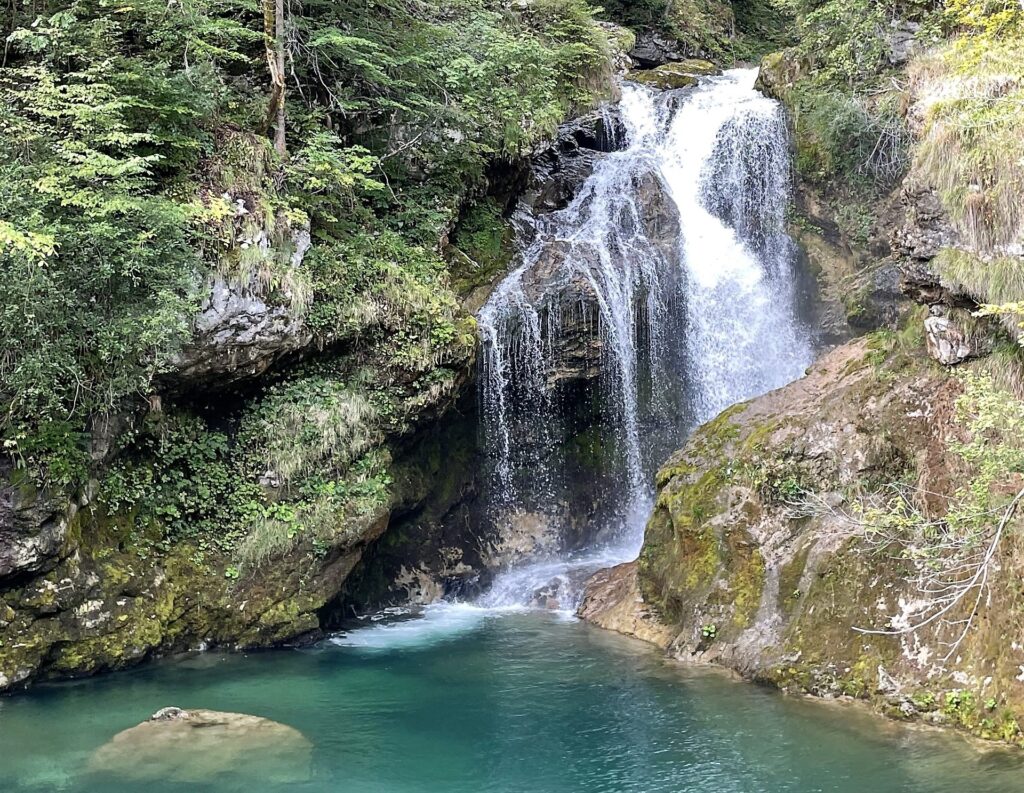
After a short rest at the small cafe, we turned right at the end of the gorge and walked back through the forests, along the Hom path, to the church of Sveta Katerina, where we took a taxi back to the campsite.
3. Škofja Loka
We continued our trip to Škofja Loka, one of the oldest and most beautiful settlements of Slovenia. It has around 13,000 inhabitants and is located at a distance of 25 km north of Ljubljana.
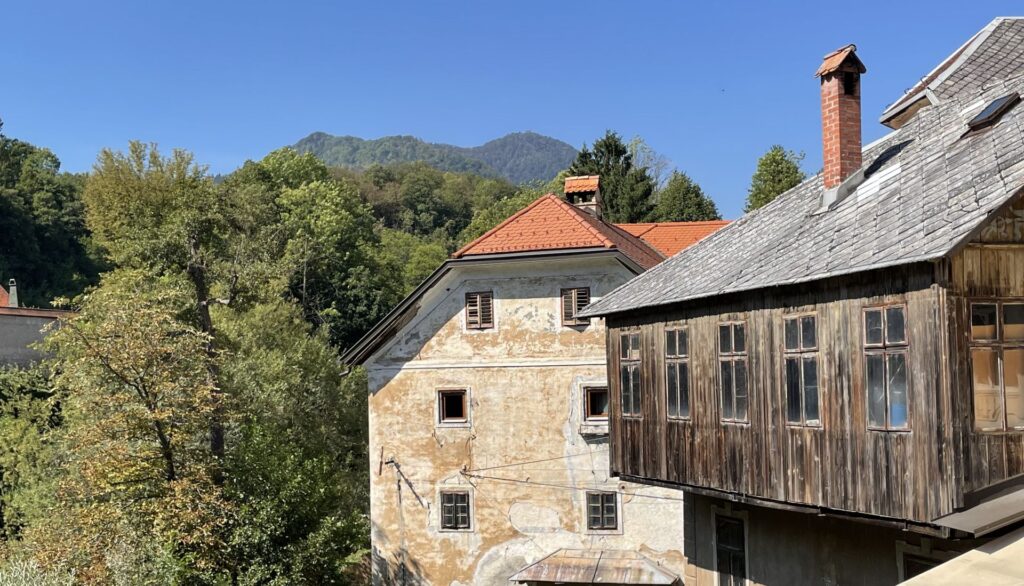
Škofja Loka has a rich history. It was given to the Bishops of Freising by the Holy Roman Emperor in the 10th century. Hence its name, which means “Bishops’ Meadows.” It is located at the meeting point of two rivers and it is surrounded by picturesque hills.
After having parked our camper van, we entered the town via the new bridge over the Selca Sora River, where we stopped to admire the views on both sides.
On one side, we saw the Capuchin Bridge, the oldest bridge in Slovenia, which is now under reconstruction. In the middle of the bridge is the statue of St. John of Nepomuk. The bridge was built in the middle of the 14th century by Bishop Leopold. Legend says that when Bishop Leopold rode across the fenceless bridge in 1381, his horse was startled and the bishop fell into the river and drowned.
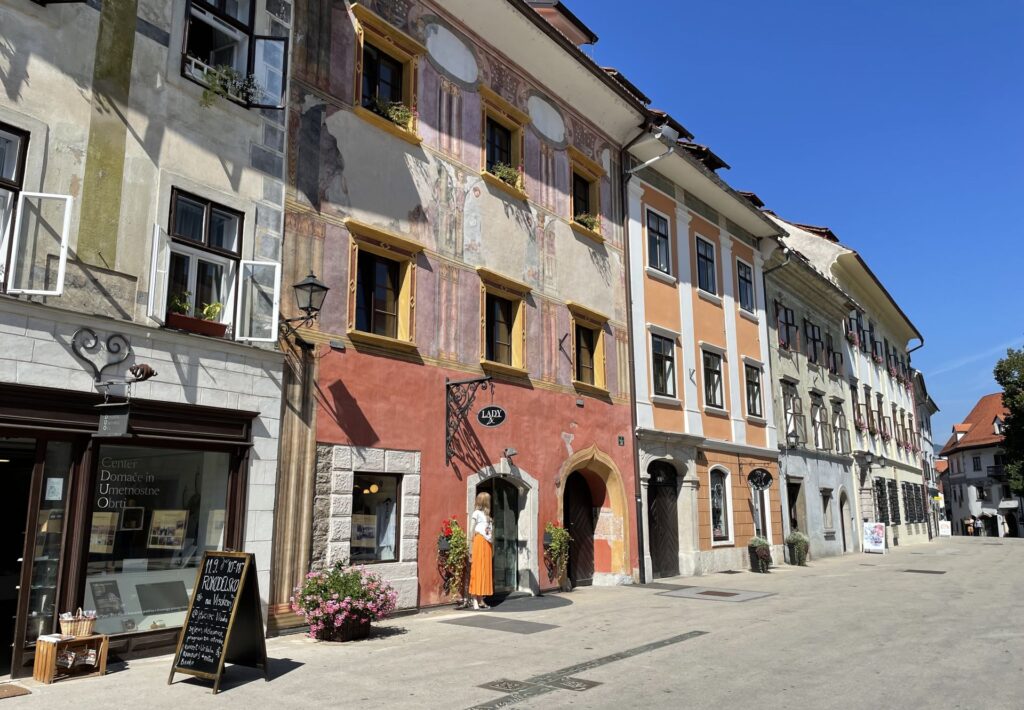
The facades of the houses along Mestni Trg, Škofja Loka‘s main square, are stunning. Their bright shades of orange, yellow, and dusty pink give the town its nickname of “Colorful Loka”.
Also in the square, you’ll find the Plague Pillar, consisting of the statues of the Holy Mary, Saint Anthony and Saint Roch. The baroque memorial was built in the 18th century and it commemorates the end of the plague in 1751.
We then walked to the Loka Castle, located on the top of a hill, which used to be the residence of the Freising Bishops. The castle dates back to the 13th century, but it was almost entirely destroyed by an earthquake in 1511. The present building dates back to the 18th century.
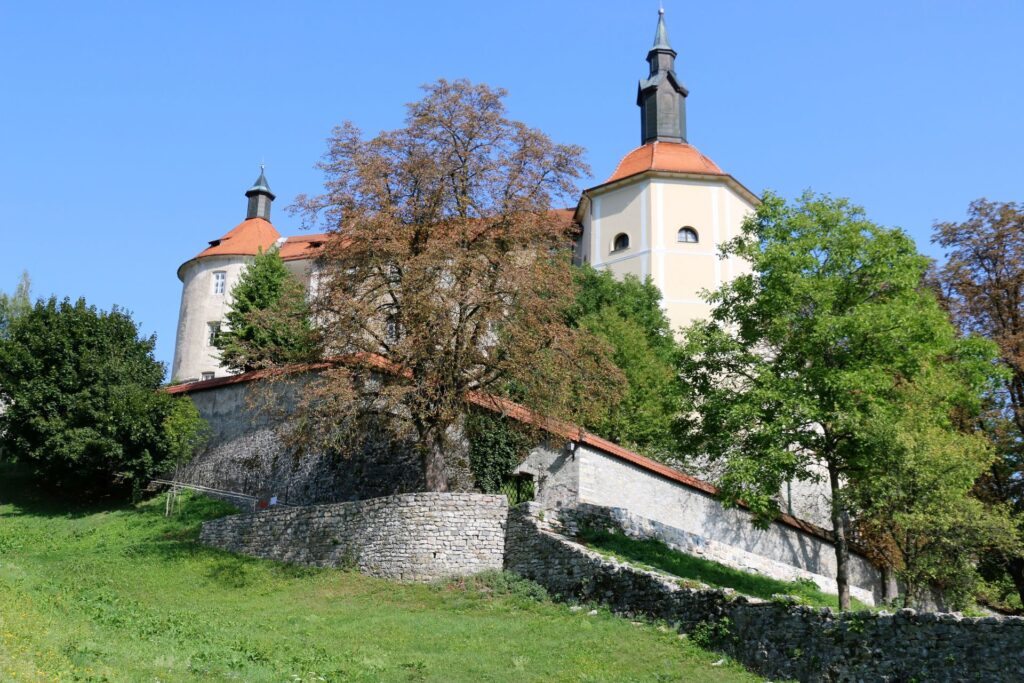
It was interesting to visit the Loka Museum that has been housed in the castle since 1959. There are two floors to the museum, and a variety of exhibits relevant to the history of the town.
We saw agricultural tools, furnishings from medieval times and archaeological exhibits. Some exhibits related to World War II: the castle was occupied by the Germans during the war, and later it was used to house German prisoners of war.
Our lunch was served in the Granary (Kašča), a restaurant in one of the best-preserved medieval buildings of Škofja Loka. To be recommended!
And then we finally arrived in
4. Ljubljana
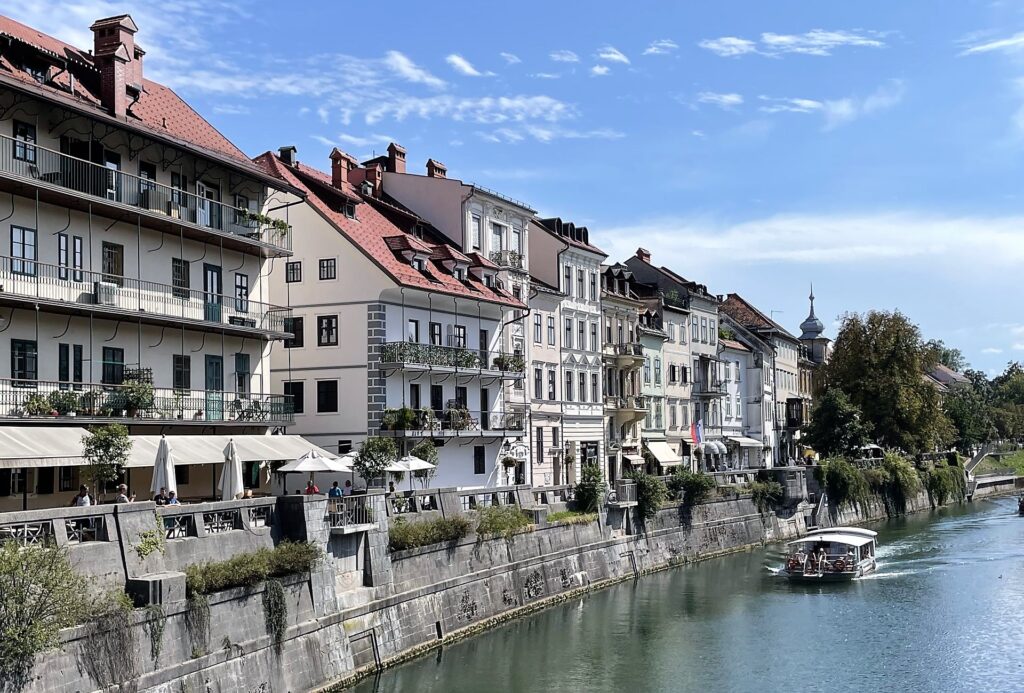
Ljubljana is the capital of Slovenia. It is one of Europe’s greenest and most liveable capitals. Just imagine that car traffic is restricted in the center, so that the banks of the Ljubljanica river, which flows through the city’s heart, is free for pedestrians and cyclists.
Just for the record, Ljubljana was founded in the 1st century B.C. under the name of Emona.
From Camping Ljubljana Resort, it was quite easy to reach the city by bus. It was a stunning experience to walk through a car-free city, especially coming from Podgorica with its chaotic traffic.
What else can I say about Ljubljana? There is so much to see! I know that a one-day visit is not enough, so I will only mention the top attractions.
Let’s start with Prešernov Trg, the central square and the city’s favorite meeting point, which is dominated by the statue of Slovenia’s greatest poet, France Prešeren.
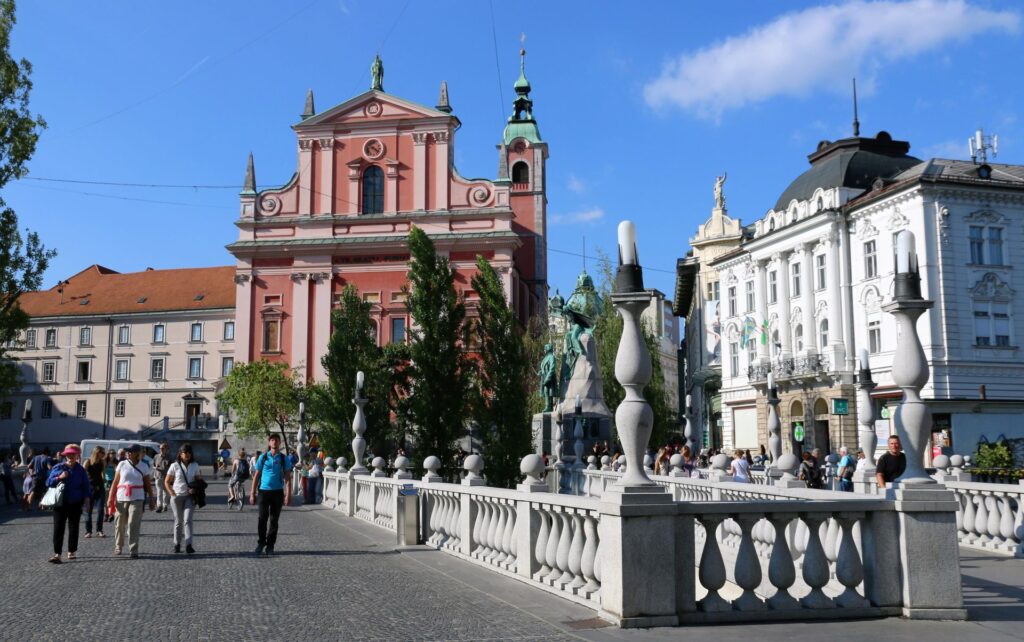
Immediately south of the statue is the Triple Bridge, a masterpiece of the Slovenian architect Jože Plečnik. As the name suggests, it is made up of three separate walking bridges merged together – one central bridge and two side bridges.
The 17th-century Franciscan Church of the Annunciation is located on the northern side of Prešernov Trg. With a salmon-pink facade and tarnished copper turrets, it couldn’t be prettier.
It was a nice experience to walk along the banks of the Ljubljanica river, densely scattered with lively cafes offering outdoor seating, and to discover other bridges, of which the Dragon Bridge – built in 1901 – is the most iconic one. Finished in 1901 and dedicated to the jubilee of Emperor Franz Joseph I, the bridge was the first reinforced concrete structure built in Ljubljana.
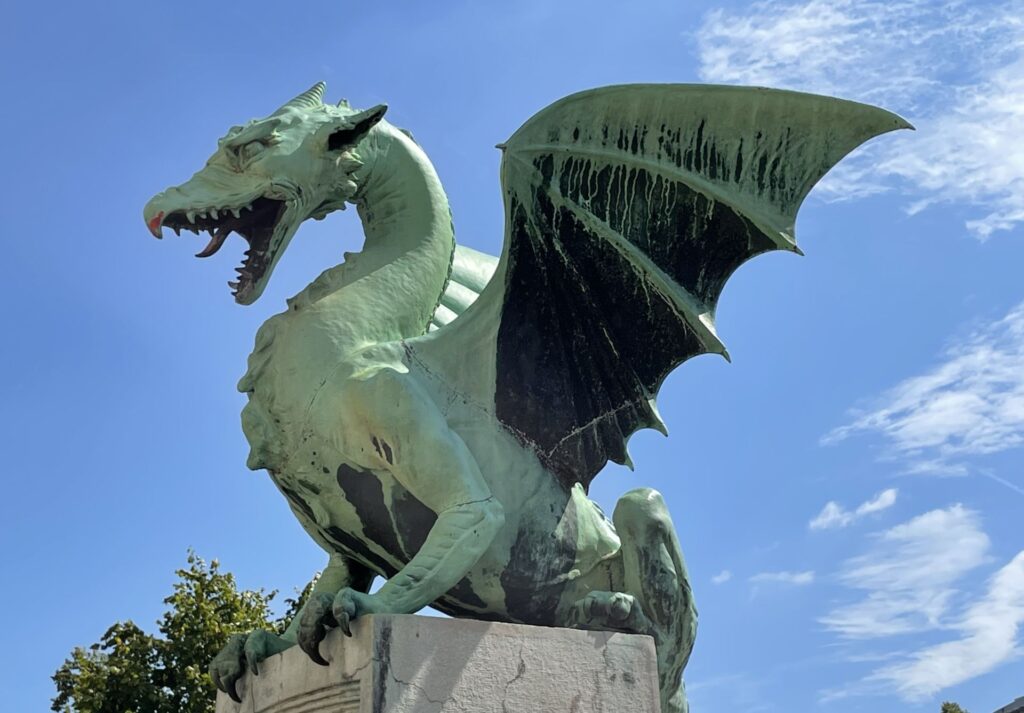
As the story goes, the bridgeheads were supposed to be adorned with winged lions. Whatever happened, it ended up being four magnificent dragons. The Dragon Bridge appears in the most recognizable images of Ljubljana.
Ljubljana castle standing on a hill above the city for about 900 years, is Ljubljana s main attraction. The outlook tower and ramparts offer beautiful view of the city, while the castle houses an exhibition on Slovenian history, a puppet museum and a number of historical rooms. It can be reached by foot or raillift. We took the raillift, but I must admit that I didn’t expect such a modern setting inside the castle…..
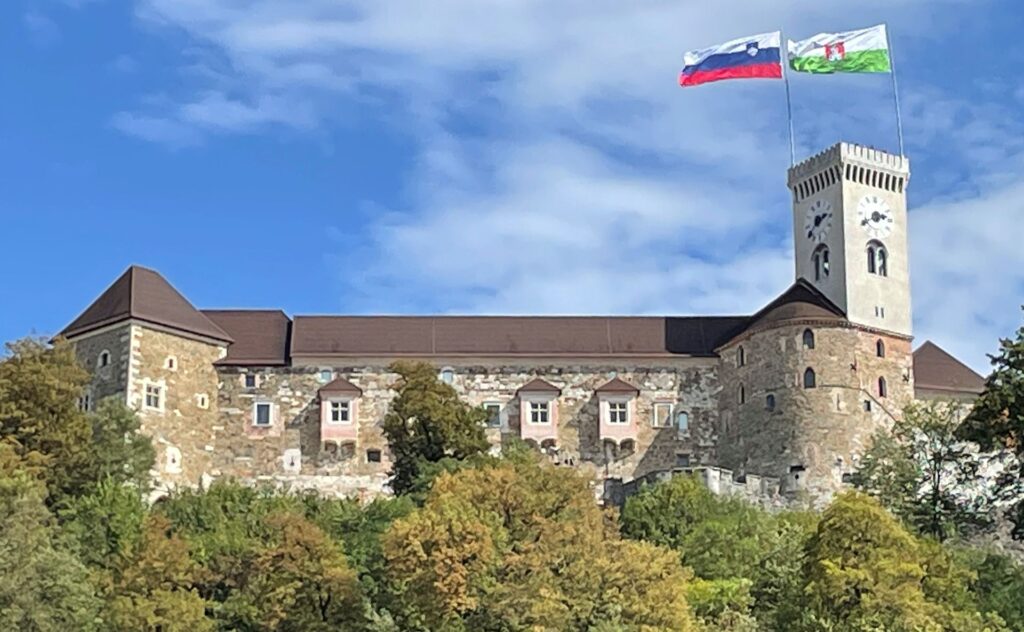
Wandering through the center, we found many buildings built by Jože Plečnik, but I personally think that the Miklošičeva street is the most beautiful part of Ljubljana. Here you can admire many Art Nouveau buildings, of which Galerija Emporum and the Vurnik House were my favorites.
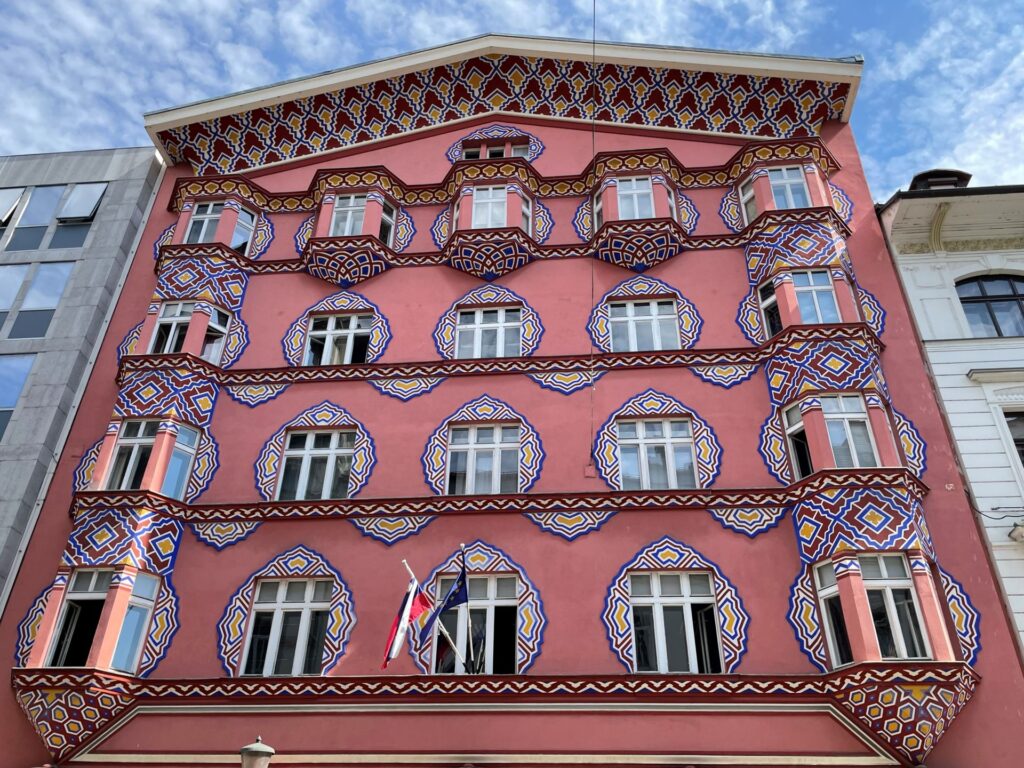
The Town Hall and the Robba Fountain are the main monuments at Mestni Trg, a lovely square lined with open-air terraces.
The Cathedral of Ljubljana (St. Nicholas’s Church) is another interesting site. Originally a Gothic cathedral, it was replaced in Baroque style in the early 18th century. But I was particularly impressed by the front portal, known as the Slovene Door, engraved with a detailed and fascinating relief that depicts significant chapters of Slovene history. It was created in 1996 to mark the 1250th anniversary of Christianity in the country.
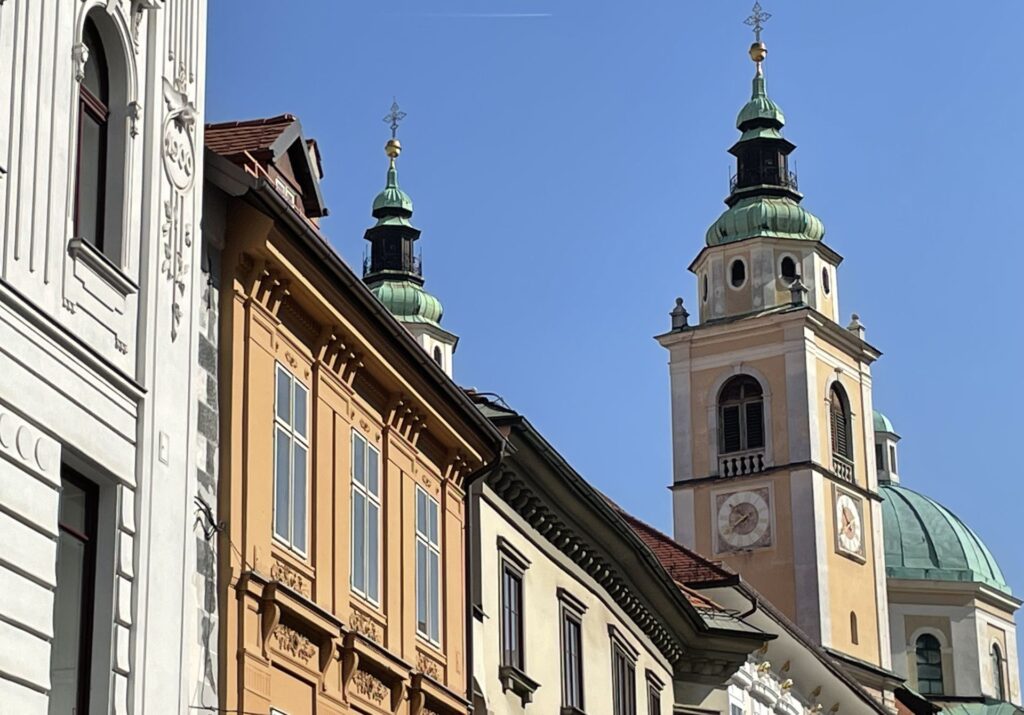
Unfortunately, we did not plan enough time to visit all sites of Ljubljana, but I was really impressed with everything I saw. Ljubljana, the green capital city of a green country, is absolutely worth visiting!
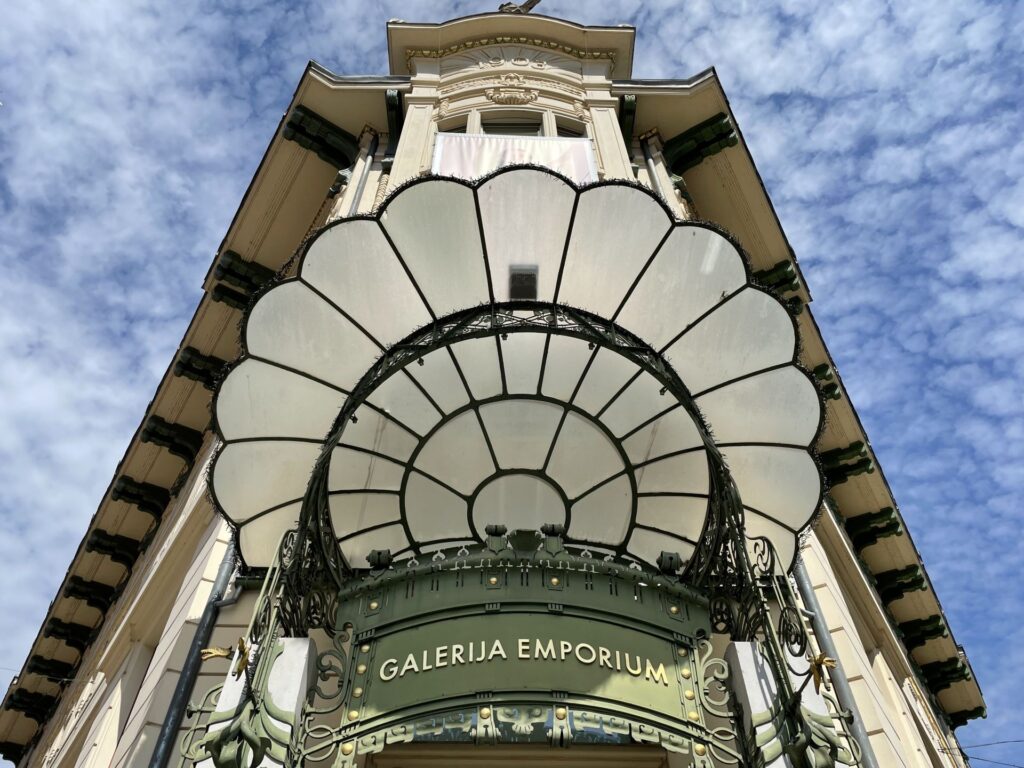
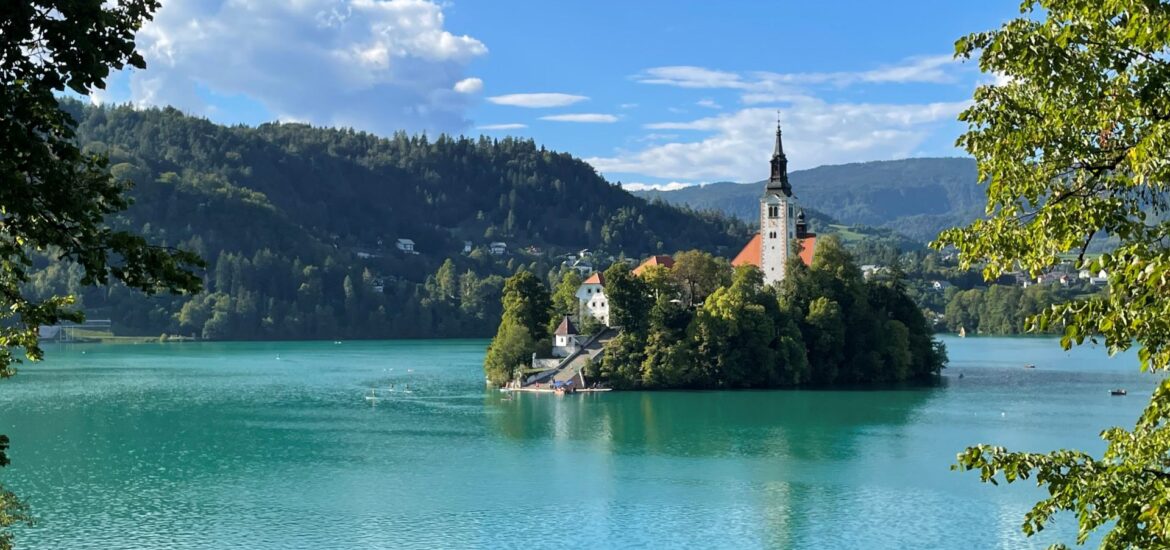
Mooi verhaal Marianne van Slovenia en Ljubljana z’n mooi stad ben ik helemaal met je eens!
Thinking of visiting Slovenia soon. Thank you for the brief but lovely description of the highlights of your trip.
Hi, Marianne! So far away from Crna Gora? …Tanks for this report. Bled ist nice for visiting. And the next Lake Bohinj is worth to visit, too. Don’t miss a ride upon top mountain Vogel. Did you already made a trip to Velika Planina?
Mooi beschrijving van een paar bijzondere plaatsen in Sloveniē. Sloveniē heeft veel te bieden, zoals de Julische Alpen met de Soća, de wijngebieden en Ptuj. Een nieuwe reis waard. 😊